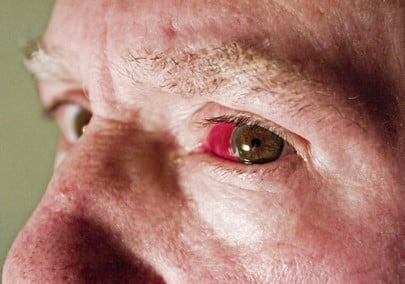Randy Charles is the owner of PaintCentric.com, a website dedicated to providing information, tips, tricks, and news about all things paint. With over 10 years...Read more
The topic of paint toxicity can sometimes be perplexing, as various paints have distinct chemical compositions. Some paints may cause serious health effects in cases of direct skin contact, fume inhalation, or accidental swallowing. Whichever the case, the effects are different depending on the type of paint. So, Is Acrylic Paint Fumes Toxic?
Generally, most acrylic paints are non-toxic. This is because they are water-based. But, there are some brands of acrylic paints which contain carcinogenic substances. Also, acrylic paints can give off harmful fumes when the paint begins to dry.
As we proceed in this article, you’d understand some factors regarding acrylic paints that make them toxic. Wed also look at what paint fumes are and what causes acrylic paint fumes.
What Are Acrylic Paint Fumes?
Acrylic paint fumes occur when the applied paint dries off. The liquid or molten paint substance evaporates slowly to dry up. Notably, paint fumes are perceivable, so when you smell the paint, in a real sense, that is the paint fume youre perceiving. Most times, paint fumes are toxic and contain substances such as carcinogens. Moreover, it’s not all kinds of paints are toxic and give off harmful fumes that cause ill health.
Oftentimes, people believe that water-based paints are non-toxic (because of their water composition) and oil-based paints are toxic. This is true to some extent, but its important to note that some models of water-based paints contain extremely toxic substances, which can be harmful when inhaled, swallowed, or come in contact with the skin.

For oil-based paints, they use chemicals, instead of water, as solvents. Usually, the solvents contain VOCs (Volatile Organic Components), which keep the paint in liquid form in the container and evaporate when exposed to the air. Its worthy to note that VOCs are very toxic and should be avoided. While working with paints with VOCs, ensure to keep the area well aerated and provide sufficient ventilation.
What Causes Acrylic Paint Fumes?
There are four main ingredients of acrylic paintspigment (colorant), resin binder (which makes it stick together), water solvent (for dissolving), and additives (e.g., thickener, preservative, ammonia, etc.). Essentially, the resin binder functions as a glue-like chemical that starts as a liquid and then dry slowly till it becomes hard. Paints that comprise resin binders produce dangerous fumes, like VOCsmost times in high degrees.
Remarkably, most pigments presently are synthesized instead of being natural. It’s also important to note that you can use either low-VOC or no-VOC components to paint your home, as this will greatly reduce the air pollution and toxicity flying about your home or office. Another thing to know about acrylic paint is that it comprises the same pigment as oil-based paints but uses different kinds of binders.

Interestingly, acrylic paint utilizes polymer emulsions with more toxicity than oil paint binders. The great thing about this binder is that, as it dries, it produces a tiny amount of glycol, ammonia, propylene, and water into the atmosphere. Notably, some of these chemicals are irritants when inhaled, but this only occurs when inhaled at higher concentrations.
All the same, propylene glycol is toxic to the environment. One other thing to consider is that, although acrylic paint is generally non-toxic, it’s not entirely safe to keep around you. As weve stated earlier on, it uses the same pigment as oil-based paints. Some pigments do contain toxic chemicals like manganese or cobalt, or even lead, which are toxic to children and pets.
Thus, you must check the instructions on working with the paint safely and what actions to take if you accidentally swallow or inhale the paint.
Is Acrylic Paint Fumes Toxic?
When asking the question, Is Acrylic Paint Fumes Toxic? It’s important to note that their chemical components make acrylic paint fumes toxic. We’ve earlier discussed that typical acrylic paint fumes are not toxic, but some brands incorporate toxic substances when producing them.

Notably, some pigments used in creating acrylic paints are just the same as their oil-based counterparts, meaning that some types of pigments can be toxic. No one wants to have a firsthand experience with paint that hurts them when inhaled, swallowed, or when touched on their bare skin.
While most acrylic paints use water for dilution, rather than oil-based paints that use solvents for dilution, they may still contain environmentally harmful substances. Yes, most acrylic paints don’t give off any fumes and aren’t very irritating to the bodyas opposed to oil paintsyou don’t want to munch on the paint substances. So, what makes acrylic paint harmful?
Pigments
Weve established that acrylic and oil-based paints share the same pigments. What differentiates them is the binders used. Acrylic paints use acrylic polymer emulsionsor plastic, whereas oil-based paints use vegetable oils or resins and other solvents that make them harmful to the health and the environment. While acrylic polymer dries up, it releases water, ammonia, and propylene glycol into the atmosphere, which isn’t harmful.
Related: Is Acrylic Paint Washable?
But, some acrylic paint brands use heavy metals, which are extremely hazardous and toxic to the health and environment. It’s also imperative to note that substances such as cobalt, manganese, cadmium, and titanium dioxide are extremely toxic and carcinogenic.
Lets look at these colorants briefly below.
o Cadmium
Cadmium is a popular acrylic paint colorant, and it is deadly to the health. This is because the substance is toxic and likely carcinogenic. Also, there is a high chance that specific kinds or degrees of exposure could expose the body cells to cancer.
o Manganese
This naturally existing mineral is known to be healthy and helpful for the human diet. On the other hand, it is dangerous to the nervous system when inhaled. Thus, making it a toxic ingredient in acrylic paint.
o Cobalt, Copper, Strontium, Zinc, Titanium Dioxide
All these heavy metals are notably toxic. This is so because, once they enter the body, they begin to amassa characteristic of cancer. Also, within the body, they eradicate and replace useful minerals in the body, causing damage to the organ system and, thusdeath, ultimately.
However, it’s also helpful to state that not all acrylic paints comprise these heavy metals. So, you can still purchase acrylic paints; just check for their components or ingredients.
VOCs.
Volatile organic compounds are chemical substances contained in paints. They begin as liquid and solidify as they dry. Paints that contain VOCs are toxic and harmful, and thus, you should ensure to keep off children and pets from them as much as you can. Their side effects are usually serious and sometimes deadly.
Take note of paint brands that contain high VOCs, and ensure to use them when youve provided sufficient ventilation in the room.
See Also:Is Testor Enamel Paint Toxic?
What Are The Side Effects Of Paint Fumes?
While paints are very necessary for beautifying the appearance of a room or surface, they also give off fumes that can pose some challenges. After painting a surface, the applied paint begins to go through a process known as off-gassing that releases chemicals into the atmosphere upon exposure to air. Now, these chemicals can have several side effects on the environment, and in this subheading, we’d discuss them below.

Side Effects When Inhaled
Inhaling acrylic paint fume that contains toxins can cause you to suffer breathing problems, worse of all if you airbrush it. This is because breathing the substances will lead them directly through your circulatory system. The substances will go from your mouth, through your throat, and into your lungs.
Heavy metals in the organs of the body begin to accumulate and can affect organs like the kidneys, lungs, liver, or even the brain. This is deadly and dangerous.
Typically, inhalation of paint particles is risky, as the human lungs arent made to handle those substances, making them prone to harm. So, while airbrushing, put on a mask, even though the paint isnt toxic. If the paint applied contains toxic substances, it’d be toxic to inhale, especially if it contains heavy metals like those listed above. Also, if you use these kinds of acrylic paints to airbrush, then you’d probably be at a bigger health risk.
While non-VOC or low-VOC paints emit very little fumes, airbrushing it will cause the paint to be sprayable and increase the level of fumes in the air.
In addition, airbrushing a high-VOC paint will increase your chances of suffering the side effects as the fumes become more breathable. In this form, you’d be able to inhale the fumes through your nose, mouth, down your throat, and into your lungs. Typically, inhalation of paint particles is risky, as the human lungs arent made to handle those substances, making them prone to harm. So, while airbrushing, put on a mask, even though the paint isnt toxic.
Side Effects When Swallowed
Also, acrylic paints that comprise toxic substances are deadly when swallowed. This also implies when a person imbibes a dried chip of paint. Once into the body, the digestive system disintegrates the paint chip into bits, releasing the toxins into the body. As we’ve said, acrylic paints that contain heavy metals will create more damage when inside the body, as the metals are carcinogenic.
Side Effects On The Skin
Depending on the ingredient, acrylic paint can be toxic when coming in contact with the skin. This is possible if the paint comprises toxic ingredients and it’s dangerous to the skin and the entire body.
On the flip side, skin contact is not a problem for non-toxic acrylic paints. Although it may cause some reactions and skin irritations, it’s not deadly. Also, if you had an existing irritation and then came into contact with the paint, it’d only aggravate the irritation.
Side Effects for Babies
Also, this depends on the composition of the paint, but it can be toxic. Even non-toxic acrylic paints are not advised near childrentoddlers and babies. This is because children will more likely put their hands and fingers in their mouths, no matter if it’s covered.
Doing this introduces toxins into their body, including the heavy metals discussed above. Therefore, leading to severe cases like organ failure and ultimately, death. What makes it more serious for children is that they’re more sensitive to specific substances.
Side Effects for Pets
Interestingly, pets are very intuitive and curious. In an attempt to familiarize themselves with something new, they will lick its surface. Since most acrylic paints are non-toxic, that won’t be a problem. But, if your pet swallows a large volume of the paint, they may experience serious symptoms like puking, tremors, diarrhea, and difficulty breathing.
How Do You Eliminate Acrylic Paint Fumes?
To eradicate acrylic paint fumes, do the following steps below.
- Provide sufficient ventilation for the room.
- Make use of indoor paint (typically low-VOC or no-VOC paints).
- Ensure to read through the label properly.
- Put on a mask while painting.
- Store leftover paints.
Final Thoughts
Is Acrylic Paint Fumes Toxic? Generally speaking, most acrylic paints are water-based and, thus, non-toxic. However, some brands incorporate toxic ingredients which can be carcinogenic. Inhaling these substances into your system can cause danger for you.

Randy Charles is the owner of PaintCentric.com, a website dedicated to providing information, tips, tricks, and news about all things paint. With over 10 years of experience in the painting industry, Randy has become an expert in the field and is passionate about helping others learn more about painting. He has written numerous articles on the subject and is committed to providing accurate and up-to-date information to his readers.
- Latest Posts by Randy Charles
-
How Much Do You Tip Painters? The Ultimate Guide
- -
Can You Paint Over Rust Converter?
- -
Can You Paint Inside When It Is Raining?
- All Posts
